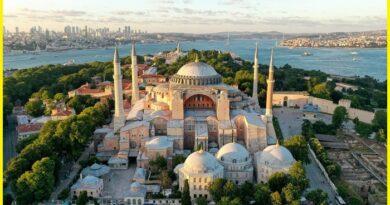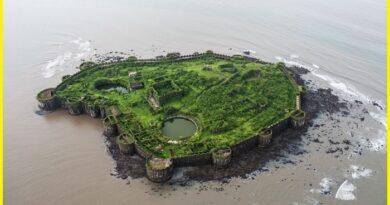Majestic Waters-Tales of the ‘Sabarmati River’
Sabarmati River
The Sabarmati River is one of the major rivers in western India, flowing through the states of Gujarat and Rajasthan. The Sabarmati River originates in the Aravalli Range in the Indian state of Rajasthan. The total length of the river is 371 km. After traveling 48 km in Rajasthan it flows into the Indian state of Gujarat and finally drains into the Gulf of Khambhat. The city of Ahmedabad, one of Gujarat’s largest cities and an important economic and cultural center is situated on the banks of the Sabarmati River. The river has played a significant role in the city’s history and development.
Sabarmati Ashram
One of the most iconic landmarks along the Sabarmati River is the Sabarmati Ashram, also known as Gandhi Ashram. It served as the residence of Mahatma Gandhi, the leader of India’s independence movement, during the struggle for independence. Today, the ashram is a museum and a pilgrimage site that attracts visitors from around the world.
Sabarmati River Front
The Sabarmati Riverfront is a prominent urban redevelopment project located in Ahmedabad. The Sabarmati Riverfront Development Project was initiated to transform the riverbanks of the Sabarmati River into a vibrant public space for recreational, cultural, and commercial activities.
The primary objectives of the project include flood control, environmental improvement, beautification of the riverfront area, and creating spaces for public use and engagement. The riverfront development includes wide promenades, landscaped gardens, parks, and recreational areas along the banks of the Sabarmati River. It also features waterfront cafes, amphitheaters, cycling tracks, and pedestrian pathways for the enjoyment of residents and visitors.

Riverfront Park- The Sabarmati Riverfront Park is a significant component of the project, offering green spaces for leisure activities, picnics, and cultural events. The park includes lush gardens, water features, sculptures, and viewpoints overlooking the river.
Also read- A Slice of Heaven-Wilson Hills Magic in Gujarat
Infrastructure- The project involved the construction of retaining walls, embankments, and promenades to prevent flooding and erosion along the riverbanks. It also included the creation of roads, bridges, and infrastructure for water sports and recreational boating.
Cultural Center- Sabarmati Riverfront also houses the Sabarmati Riverfront Event Center, a venue for cultural events, exhibitions, and performances. The center hosts various cultural festivals, concerts, and art exhibitions throughout the year.
Tourist Attraction- The Sabarmati Riverfront has become a popular tourist destination and a symbol of urban revitalization in Ahmedabad. It attracts locals and tourists alike who come to enjoy the scenic views, recreational activities, and cultural events along the riverfront. The riverfront development project has contributed to the revitalization of the city center, promoting tourism, economic growth, and community engagement. It has also enhanced the city’s image and quality of life for its residents.
Sabarmati River Origin
The Sabarmati River is one of the major west-flowing rivers in India. It originates in the Aravalli Range of the Udaipur District of Rajasthan and meets the Gulf of Khambhat of the Arabian Sea after traveling 371 km in a south-westerly direction across Rajasthan and Gujarat. 48 km of the river length is in Rajasthan, while 323 km is in Gujarat. Specifically, it originates from the Dhebar Lake, also known as the Sipu Dam. The Dhebar Lake is located near the village of Dharoi in the Udaipur district.
Sabarmati River Bridge
The Sabarmati River Bridge, also known as the Sabarmati Riverfront Bridge, is a significant infrastructure project located in Ahmedabad. This bridge is an essential component of the Sabarmati Riverfront Development Project, aimed at transforming the riverbanks of the Sabarmati River into a vibrant urban space. The Sabarmati River Bridge spans across the Sabarmati River and connects the eastern and western banks of Ahmedabad. It serves as a crucial transportation link for vehicles, pedestrians, and cyclists, facilitating connectivity between different parts of the city.
Design- The bridge features a modern and aesthetically pleasing design, in line with the overall architectural theme of the Sabarmati Riverfront Development Project. It incorporates contemporary design elements while complementing the natural surroundings of the riverfront area.
Length and Width- The bridge spans a considerable distance across the Sabarmati River, providing ample space for vehicular traffic, pedestrians, and cyclists. Its width allows for smooth traffic flow and safe passage for pedestrians and cyclists.

Connectivity- The Sabarmati River Bridge enhances connectivity between the eastern and western parts of Ahmedabad, improving accessibility for commuters, residents, and tourists. It facilitates smoother transportation and reduces travel times across the city. The bridge’s aesthetic design adds to the visual appeal of the Sabarmati Riverfront area, creating a picturesque landmark that contributes to the city’s skyline. Illumination features may enhance the bridge’s appearance during nighttime, making it an attractive sight for visitors.
Symbolism- The Sabarmati River Bridge symbolizes the city’s commitment to urban development, infrastructure enhancement, and the revitalization of public spaces. It represents a modern and progressive approach to city planning and design.
Sabarmati River Cruise
the Sabarmati Riverfront in Ahmedabad offers various recreational activities and attractions along its banks.
Boating
While not a cruise, you can enjoy boating on the Sabarmati River. There are paddleboats and motorboats available for rent at designated spots along the riverfront. It’s a great way to enjoy the scenery and relax on the water.
Riverfront Walks
The riverfront has well-maintained promenades and walkways where you can take leisurely strolls and enjoy the views of the river and the city skyline.
Cycling
Renting bicycles is a popular activity along the riverfront. You can explore the expansive riverfront area and nearby attractions on two wheels.
Picnics and Leisure Time
The Sabarmati Riverfront has numerous parks, gardens, and open spaces where you can have picnics, play outdoor games, or simply relax with family and friends.

Cultural Events and Festivals
The riverfront often hosts cultural events, concerts, and festivals, especially during special occasions like Diwali, Navratri, and New Year’s Eve. Keep an eye out for upcoming events and performances.
While a dedicated river cruise service may not be available at the moment, the Sabarmati Riverfront offers a pleasant and enjoyable environment for visitors to unwind, engage in recreational activities, and appreciate the beauty of the river and its surroundings.
How to Reach Sabarmati River Front
Reaching the Sabarmati Riverfront in Ahmedabad is relatively straightforward, given the city’s well-developed transportation infrastructure. Ahmedabad is well-connected by rail to major cities across India. While there isn’t a direct train station at the Sabarmati Riverfront, you can reach Ahmedabad Railway Station or Sabarmati Junction Railway Station and then take a taxi, auto-rickshaw, or bus to reach the riverfront.
The Ahmedabad Metro, also known as the MEGA (Metro Link Express for Gandhinagar and Ahmedabad), offers metro rail services connecting various parts of Ahmedabad. The riverfront is accessible via the metro, and you can alight at the appropriate station and walk or take a short ride to reach the riverfront area. If you’re traveling within Ahmedabad or from nearby areas, you can easily reach the Sabarmati Riverfront by car or taxi. Ahmedabad has well-maintained roads, and various taxi services operate within the city. You can use GPS navigation apps to find the best route to the riverfront.

Ahmedabad has an extensive public bus network operated by the Ahmedabad Municipal Transport Service (AMTS) and the Gujarat State Road Transport Corporation (GSRTC). Several bus routes connect different parts of the city to the Sabarmati Riverfront. You can inquire about the nearest bus stop and take a bus to reach your destination. If you’re staying in a hotel or accommodation near the riverfront, you can explore the area on foot or rent a bicycle to reach the Sabarmati Riverfront. The riverfront has well-maintained walkways and cycling tracks, making it easy to navigate on foot or by bicycle.



